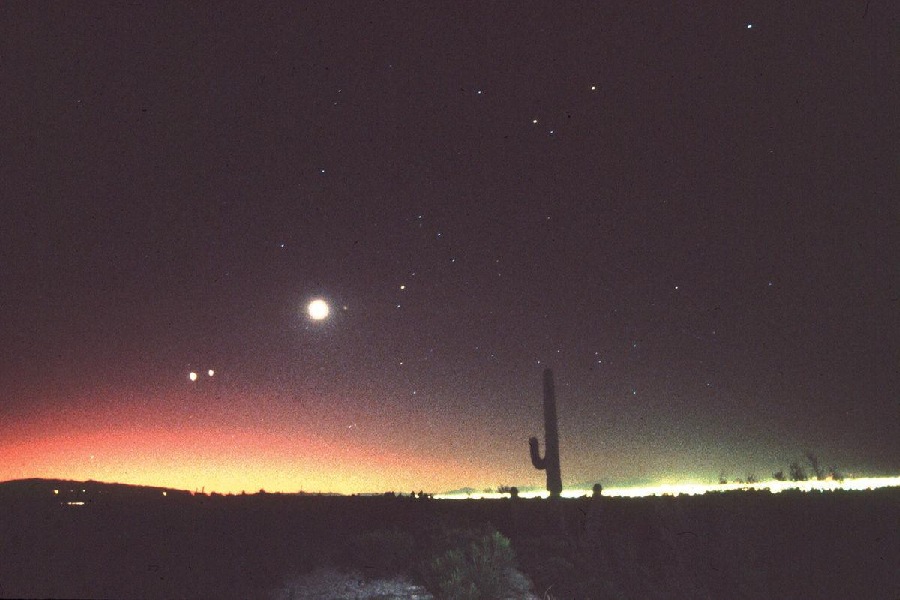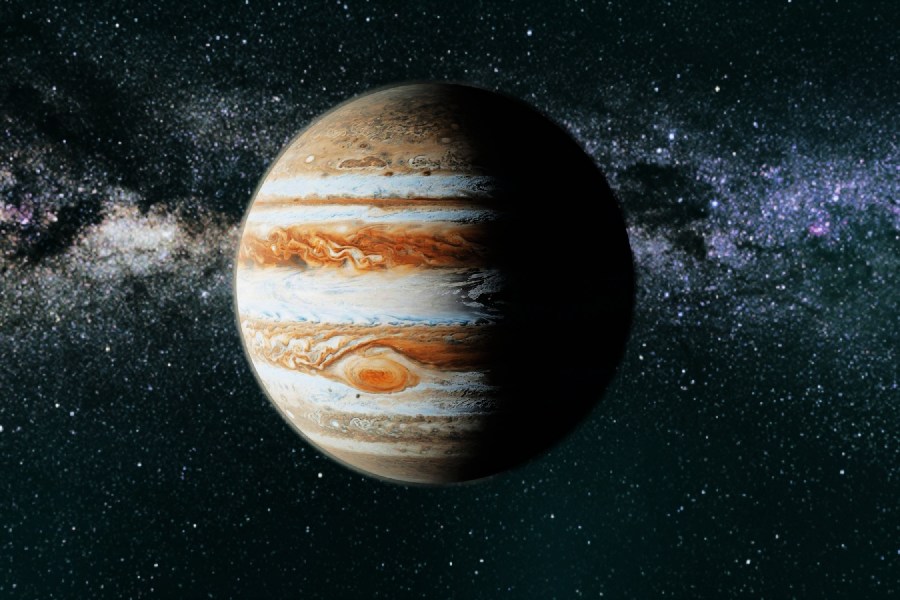The vast diversity of planets has always intrigued humans. Imagining worlds both similar and vastly different from our own has kindled curiosity and wonder throughout human history. But what planets can you see with naked eye?
In this article, we’ll explore what planets one can see with the naked eye and dive into their unique characteristics and observable features.
From the dazzling brilliance of Venus to the distant, subtle glow of Saturn, we’ll uncover the secrets of these celestial bodies. We’ll also provide insights into how and when to spot them in the night sky.
Prepare to be amazed by the beauty and accessibility of our cosmic neighbors as we unveil the planets within your reach!

What Planets Can You See With the Naked Eye?
You can see several planets with the naked eye: Mercury, Venus, Mars, Jupiter, and Saturn. They appear as bright points of light in the sky, resembling stars.
Occasionally, Uranus and Neptune may be visible under optimal conditions without a telescope, though they are fainter. These planets are best observed during specific times of the year and are most prominent in the evening or early morning hours, adding wonder to our night sky.
What are naked-eye planets?
Naked-eye planets are those planets in our Solar System that can be seen without the aid of telescopes or other optical instruments. These planets are bright enough to be visible to the naked eye from Earth.
These planets are visible because they reflect sunlight and appear as bright points of light against the backdrop of the night sky. Humans have observed them for thousands of years, and they were among the first celestial objects to be recognized and studied. So, what planets can you see with the human eye? Let’s learn more about them!
Brightest Objects in the Evening Sky
Mercury: The elusive messenger
Mercury is the closest planet to the Sun and is a small, rocky world. It appears as a bright star-like object near the horizon to the naked eye. However, it can only be observed shortly after sunset or before sunrise, as it never strays too far from the Sun’s glare.
A challenging naked-eye catch
Spotting Mercury with just the naked eye is one of the toughest feats for sky watchers. Its swift orbit means it never strays too far from the Sun’s glare, staying hugged close to the horizon during twilight hours when visible. Catching this fleeting world requires perfectly timed observations.
The key is twilight
The best opportunities to sight Mercury’s faint speck with the naked eye come during its greatest elongations east or west of the Sun. These narrow windows in the evening or morning twilight represent the only times Mercury is separated enough from the Sun’s overwhelming brightness. During these moments, it can be glimpsed by unaided eyes.
Venus: The brilliant evening/morning star
Venus is the brightest planet in the night sky, often outshining all other celestial objects except the Moon. Its brilliance is due to its thick clouds, which reflect a significant amount of sunlight. Venus is also the closest planet to Earth.
A radiant celestial beacon
Venus shines as the brightest celestial object after the Sun and Moon to the naked eye. Its brilliance is unmistakable, often called the “evening star” when visible after sunset or the “morning star” before sunrise. Venus’ maximum brightness makes it one of the most easily spotted naked-eye planets.
Best times for viewing
The best opportunities to see Venus are around its greatest elongations – when it appears farthest from the Sun in the sky. During these times, shortly after sunset or before sunrise, Venus will be highest above the horizon and visible for a few hours. Its bright, steady light is hard to miss.
The brilliant “star”
Throughout history, many cultures initially mistook the radiant Venus for an exceptionally bright star or astronomical marvel. Its steady glow and position change relative to the stars over weeks and months revealed its true nature as a wandering planet.
A guidepost for observers
For skywatchers learning to spot planets, Venus is often the guidepost that helps identify the general region of the sky to search. Its prominence makes it easy to locate first, from which nearby planets like Mercury, Mars, Jupiter and Saturn may also become visible.
Mars: The Red Planet
Among the naked-eye planets, Mars stands out with its distinctive reddish hue. This rusty color, caused by iron oxide in its soil, gives Mars an unmistakable appearance in the night sky. Its striking red tint has captured the human imagination for millennia.
Finding the Red Planet
To locate Mars, look for a bright reddish-orange object that doesn’t twinkle like a star. Its steady, ruddy glow sets it apart from the myriad twinkling points of light. Mars can often be spotted sharing the evening sky with brilliant Venus and Jupiter when conditions are favorable.
Close encounters
Mars makes one of its closest approaches to Earth every couple of years, called an “opposition.” During these events, Mars appears brightest and largest, making it an even more prominent naked-eye target. The 2003 and 2018 oppositions were among the closest in nearly 60,000 years.

Jupiter: The brilliant celestial ruler
After Venus, Jupiter ranks as the next brightest naked-eye planet in the night sky. Its brilliant, steady glow is unmistakably the third brightest object, outshining even the brightest stars. This makes Jupiter an easy target for unaided eyes to spot in the heavens.
An eternal celestial companion
Unlike some planets that are visible only briefly, Jupiter is a reliable naked-eye companion year-round in the night sky. Its slow orbit means it remains visible for many months before becoming too close to the Sun’s glare. Patient observers can track its stately progress against the starry background.
Oppositions and close encounters
While always bright, there are times when Jupiter’s brilliance peaks even further – during oppositions when it comes nearest to Earth. These oppositions occur about every 13 months, with Jupiter appearing at its most radiant and highest in the sky around midnight.
A steady light among the stars
Unlike twinkling stars, Jupiter shines with a steady, unchanged glow to the naked eye, betraying its status as a nearby planet rather than a distant Sun. This distinctive, steady shining makes it easier to discern Jupiter from the multitudes of flickering stellar lights.
Saturn: The ringed wonder
While not as brilliant as Jupiter, Saturn still shines as one of the brightest and most distinctive naked-eye planets. To an unaided observer, it appears as a bright golden point of steady light against the starry background. This unchanging luminous glow sets it apart from the twinkling stars around it.
A reliable naked-eye target
Thanks to its predictable movements and position in our night sky, Saturn is typically visible to the naked eye for several months before becoming too close to the Sun’s glare. Its leisurely path allows ample opportunities to spot the ringed world with just eyes alone during its prime viewing periods.
The farthest naked-eye planet
Saturn, among the five brightest planets observable without optical aid, is the farthest from the Sun and the Earth. Despite its incredible remoteness at over 900 million miles away when nearest to the Earth, Saturn’s light still reaches our eyes as a distinct, steady golden point.
A guidepost to the ringed beauty
While Saturn’s breathtaking ring system is only discernible through even a modest telescope, finding the golden steady light with the naked eye first provides a useful guidepost. Once located, observers can turn optics toward that area for fantastic views of the iconic rings surrounding the gaseous world.
Other celestial objects visible to the naked eye
Naked-eye celestial objects include stars like Sirius and Vega, recognizable constellations such as Orion and Ursa Major, and the Andromeda Galaxy (M31). Some nebulae, like the Orion Nebula (M42), are also visible.
Numerous meteors streak across the sky during meteor showers, like the Perseids and Geminids. Comets like Hale-Bopp and Hyakutake occasionally become bright enough to be seen without telescopes. These phenomena offer diverse sights to enjoy with just the naked eye and a clear night sky.
Conclusion
What planets can you see with the naked eye? From the brilliant radiance of Venus to the unmistakable rusty hue of Mars and the golden glow of Saturn, these celestial wonders have captivated stargazers for millennia.
Whether a seasoned skywatcher or a newcomer to astronomy, being able to spot these planets with just the eyes is a rewarding experience. It connects observers to the vastness of the universe.
By learning about the visible planets and their unique traits, one can better appreciate the night sky’s wonders and the cosmos’ captivating dance. So, on the next clear night, they should step outside and allow the celestial bodies to guide their gaze across the heavens.
